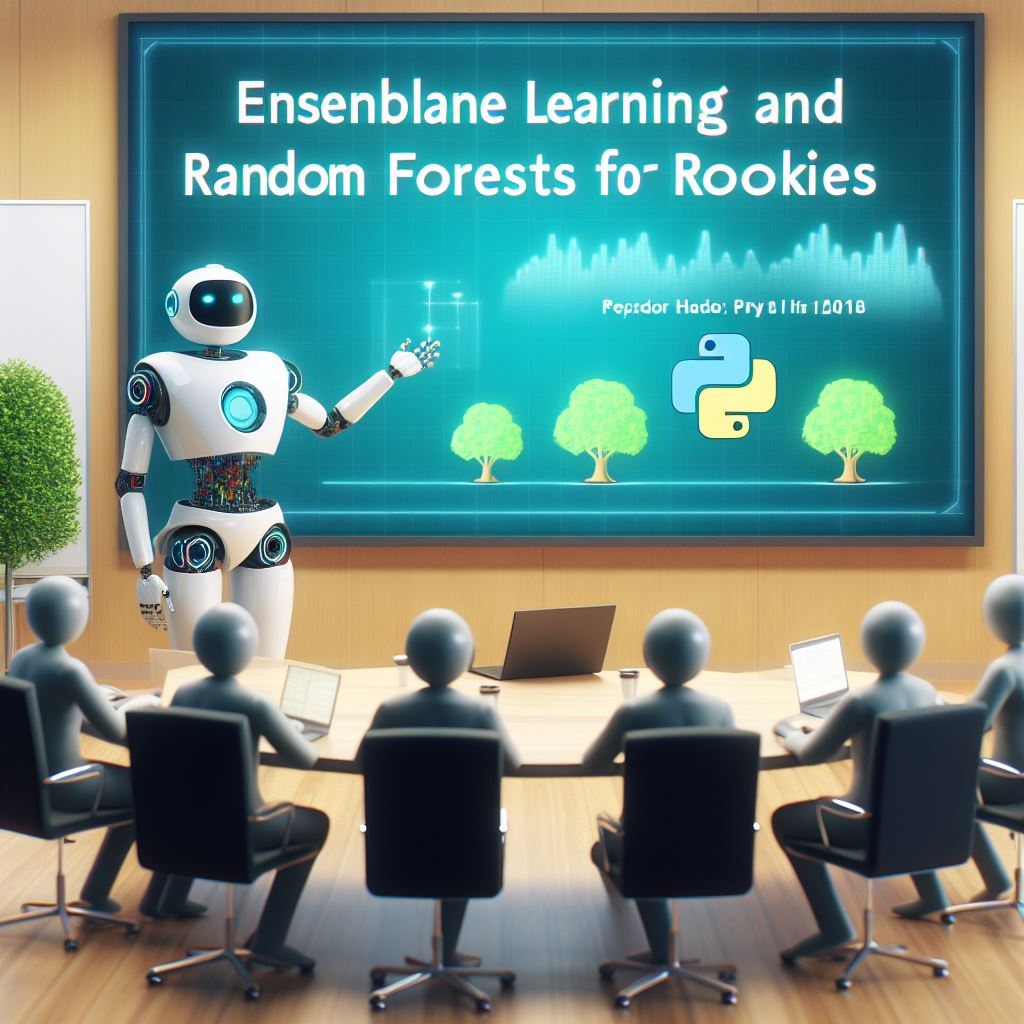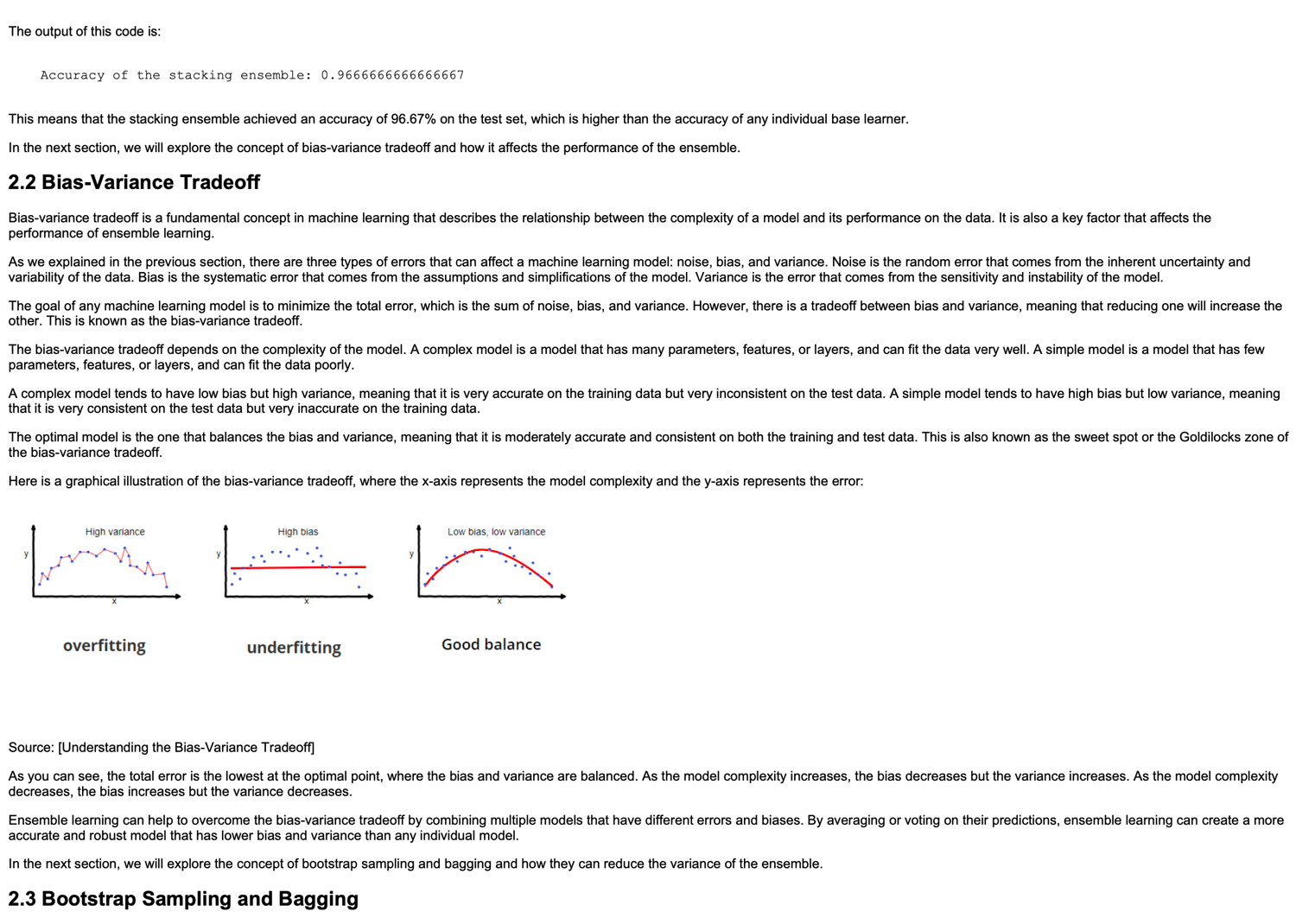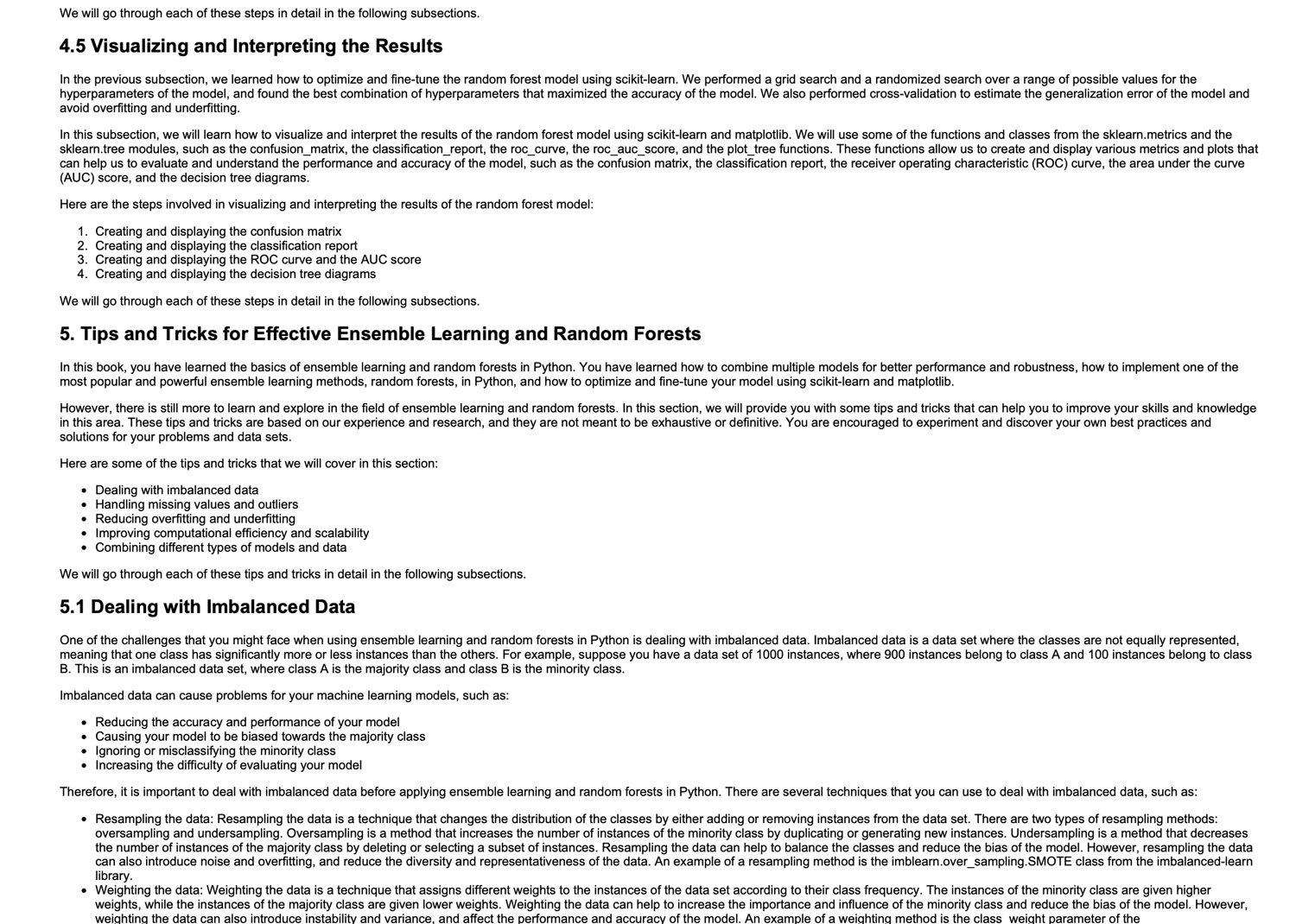ML Book 4 - Ensemble Learning and Random Forests in Python for Rookies
Table of Contents
1. Introduction
1.1 What is Ensemble Learning?
1.2 Why Use Ensemble Learning?
1.3 Types of Ensemble Learning Methods
1.4 Challenges and Limitations of Ensemble Learning
2. Basic Concepts and Terminology
2.1 Base Learners and Meta Learners
2.2 Bias-Variance Tradeoff
2.3 Bootstrap Sampling and Bagging
2.4 Stacking and Blending
2.5 Boosting and Gradient Boosting
3. Random Forests
3.1 What is a Random Forest?
3.2 How Does a Random Forest Work?
3.3 Advantages and Disadvantages of Random Forests
3.4 Hyperparameters and Tuning of Random Forests
3.5 Feature Importance and Selection with Random Forests
4. Implementing Ensemble Learning and Random Forests in Python 4.1 Setting Up the Environment and Data
4.2 Building and Evaluating a Simple Random Forest Model
4.3 Comparing Different Ensemble Learning Methods
4.4 Optimizing and Fine-tuning the Random Forest Model
4.5 Visualizing and Interpreting the Results
5. Tips and Tricks for Effective Ensemble Learning and Random Forests 5.1 Dealing with Imbalanced Data
5.2 Handling Missing Values and Outliers
5.3 Reducing Overfitting and Underfitting
5.4 Improving Computational Efficiency and Scalability 5.5 Combining Different Types of Models and Data
6. Conclusion
6.1 Summary of the Main Points
6.2 Future Trends and Developments in Ensemble Learning and Random Forests 6.3 Further Resources and References















